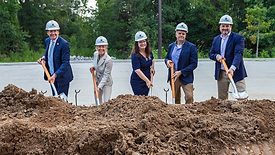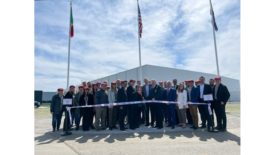Home » plant design
Articles Tagged with ''plant design''
Announcements
Standard Meat Co. Finalizes Plans for New Fort Worth Protein Processing Plant
January 26, 2024
Construction Survey
FOOD ENGINEERING’s 46th Annual Plant Construction Survey
Pandemic issues on the wane, but labor, inflation and equipment availability slow projects.
July 14, 2023
Plant Openings
Swift Prepared Foods Opens New $200 Million Principe Foods Facility in Missouri
April 10, 2023
A Practical, No-Regret First Step to Complete Decarbonization
Setting an achievable ‘net-zero’ emissions goal is possible, however, it may require companies to lean less on renewables and more on a facility’s waste heat to make up the difference.
January 9, 2023
Flooring and Food Safety
How Choosing a Floor Can Affect Food Safety
The difference between shutting down operations and initiating a product recall can come down to the material under your feet.
December 7, 2022
Elevate your expertise in food engineering with unparalleled insights and connections.
Get the latest industry updates tailored your way.
JOIN TODAY!Copyright ©2024. All Rights Reserved BNP Media.
Design, CMS, Hosting & Web Development :: ePublishing













